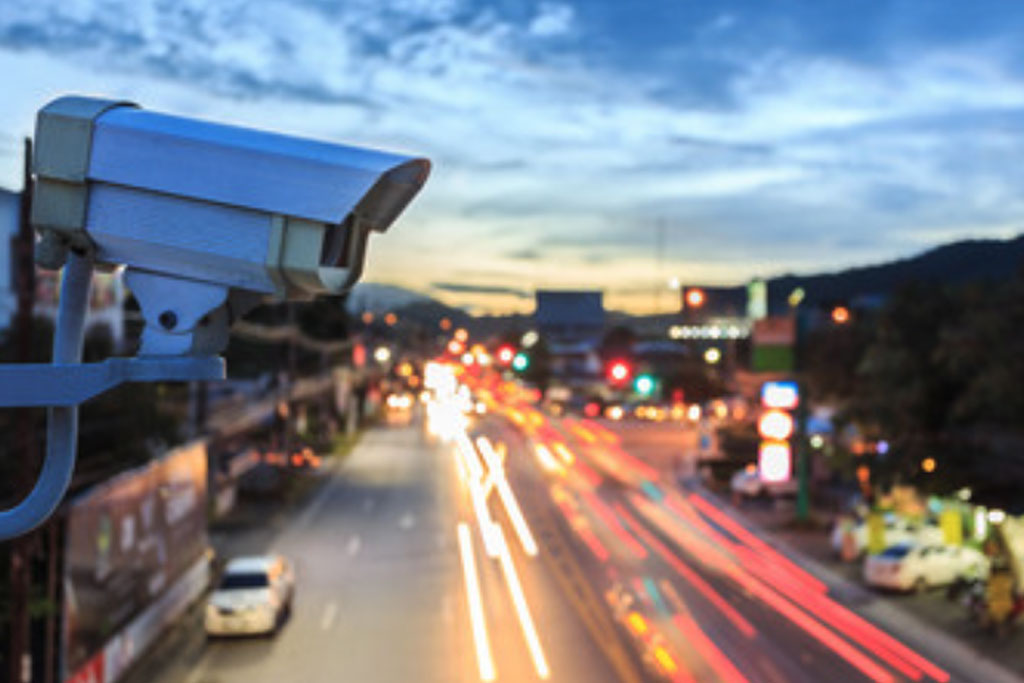Managing the Curb with Technology
By Chris Scheppmann
The urban transportation landscape is rapidly changing, with ride sharing services becoming ubiquitous and self-driving vehicles on the horizon. No longer do most travelers drive themselves to a parking facility near their ultimate destinations; today they are just as likely to be dropped off by an Uber or Lyft driver right at the curb in front of their destination.
This trend has had a significant impact on downtown traffic, cluttering the curb with unmanaged vehicle movement and creating an unsafe environment for drivers and pedestrians alike. And curbs will become even more cluttered when self-driving vehicles begin to populate our streets in significant numbers, dropping off their passengers and then taking off.
In fact, over the past two years we have already begun to experience these changes because of the Covid-19 pandemic. At the height of the initial wave of Covid, restaurants and stores introduced curbside pickup to serve their customers (and to survive). In many neighborhoods curbsides are now more like a free-for-all, with drivers pulling up wherever they like for however long they want. The proliferation of self-driving vehicles will just exacerbate this already serious issue.
A Technological Solution
The answer to these new curbside pressures can be found in Intelligent Camera Technology. Intelligent Camera Technology leverages the latest advancements in vison-based software technology to provide accurate and affordable curb management. The cameras monitor curbside activity in real time, analyzing what types of vehicles are using the curb and for how long, and transmitting that information to a cloud-based platform that determines whether each vehicle’s use of the curb is appropriate.
The heart of the curb management suite is specialized software that constantly receives data from curbside cameras and analyzes that data in real-time. The software manages a host of essential curb-related tasks, including TNC monitoring, automated enforcement, live occupancy monitoring, and data analytics. Altogether, the curb management technology plays two distinct roles: 1) real-time curb management and enforcement, and 2) data collection and analysis to improve mobility and transportation planning.
The technology can be set up to manage curbs in any manner city planners wish. For instance, zones can be broken down by function, with one zone set aside for deliveries and another for drop-offs. When set up this way, the system can recognize what types of vehicles are using the given space and determine whether that use is appropriate. If vehicles are using curb space inappropriately, enforcement offers can be notified.
Similarly, if the curb is set up to permit any type of use, but for a limited time, the Intelligent Camera system can monitor how long vehicles are utilizing the space. If they overstay the permitted length of time, enforcement officials can be notified.
One unique benefit of Intelligent Camera technology is that it utilizes machine learning, a type of artificial intelligence (AI). Equipment with Machine Learning can modify itself when exposed to more data. As such, it is dynamic and doesn’t require human programmers or designers to make certain changes. As a result, the Machine Learning elements of a piece of equipment are always improving the utility of that equipment.
Machine Learning uses algorithms that predict certain outcomes and minimize errors in those predictions. They rely on neural networks, to keep measuring errors and modifying the program to minimize—and hopefully eliminate—those errors. These neural networks, which are modeled loosely on the human brain, allow technology to learn to perform a task by analyzing training examples. An object recognition system, for instance, might be fed thousands of labeled images of cars, trucks, motorcycles, buses, etc., so it can find visual patterns in the images that consistently correlate with particular labels. In short, it learns how to differentiate between objects by analyzing the shapes of different objects.
This is invaluable for managing the curb. Not only can the system differentiate between different types of vehicles and uses (i.e., delivery trucks vs. passenger vehicles), but as new types of vehicles are introduced (such as self-driving vehicles, micromobility vehicles, etc.), the technology can learn to differentiate between them as they are introduced. As circumstances change, the system teaches itself about these changes so it can keep up. Not only does that make the technology more useful, but it also assures that it won’t have to be replaced as newer types of transportation are added to the mix.
Finally, Intelligent Camera systems collect and analyze data about how the curb is being utilized to assist city planners in mobility planning. It provides a better understanding into the traffic and parking habits of all types of transportation users, including TNCs, delivery trucks, e-scooters, buses, passenger vehicles, bikes, and pedestrians. The technology can tell planners exactly how their curbs are being used by all these groups, and planners can use this data and analysis to make more informed decisions about what types of strategies can help them manage the curb better.
Where Parking Meets Curb Management
Intelligent Camera Technology was developed to provide accurate and affordable parking guidance, but it’s also the perfect tool for automated curb management. Because it provides the dual benefit of being able to manage curbs while also providing parking guidance, it will be an important technology in the future as the smart city movement continues to evolve and mature. The guidance elements will guide drivers directly to available parking spaces close to their destination while the curb management elements will help keep traffic flowing around curbs and other drop-off and delivery areas.
At a time when cities’ focus is turning increasingly to mobility, curb management has become an essential element of urban and transportation planning. With the introduction of Intelligent Camera Technology, cities now have an affordable and effective tool for managing the curb.
About the author
Chris Scheppmann is managing member of EnSight Technologies. He can be reached at chris@ensight-technologies.com.






